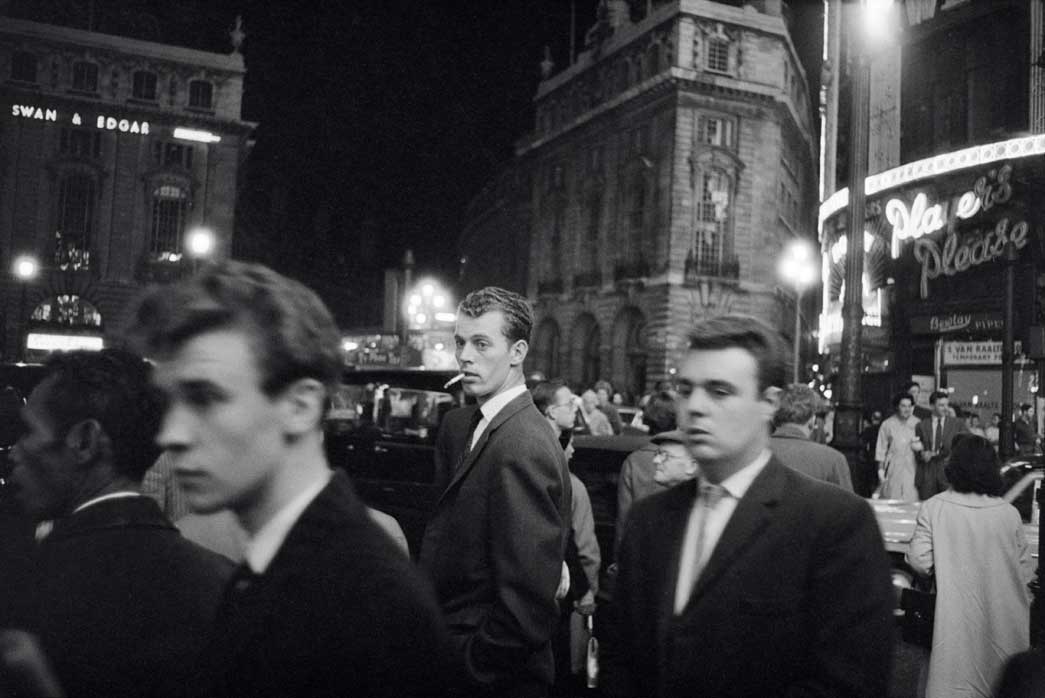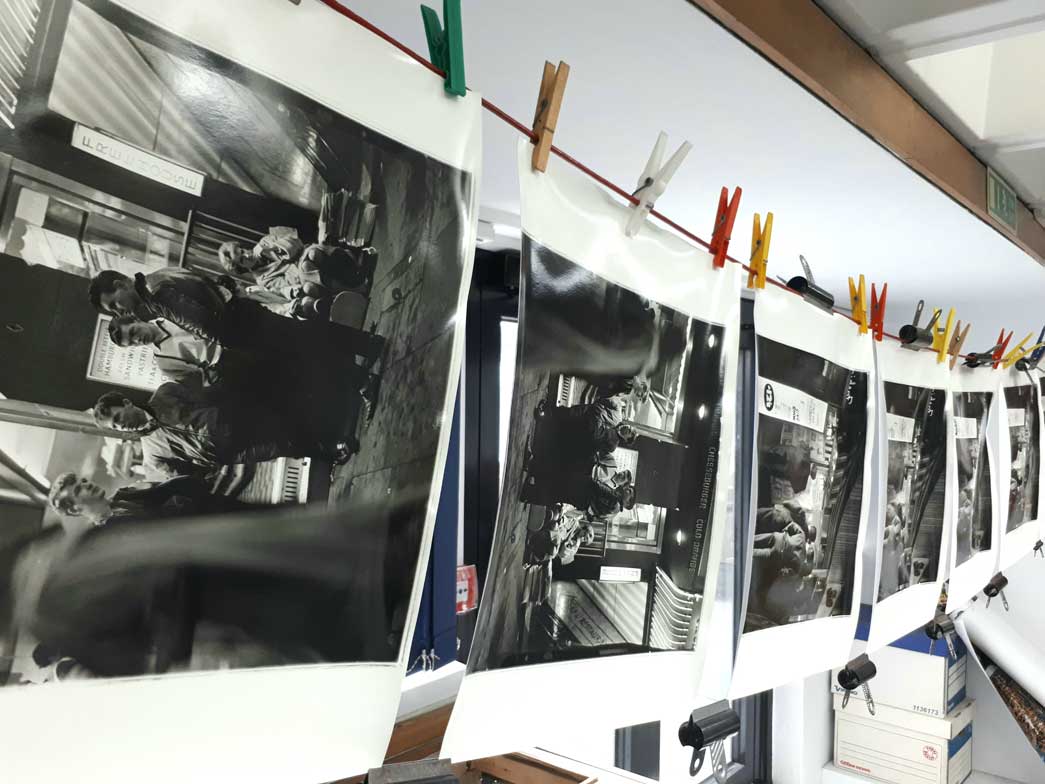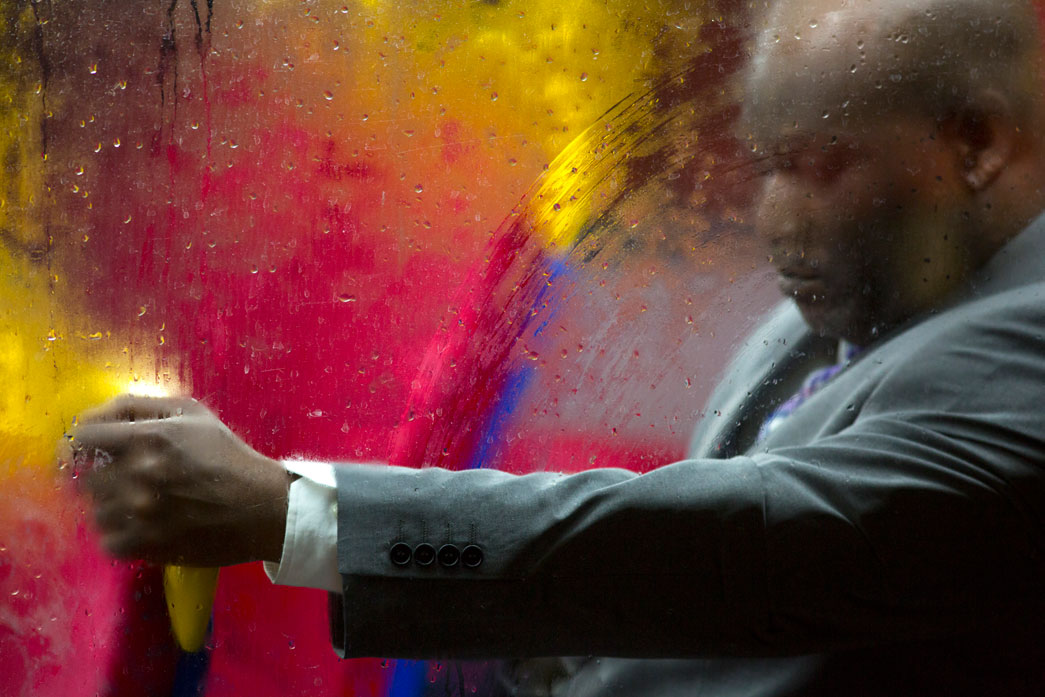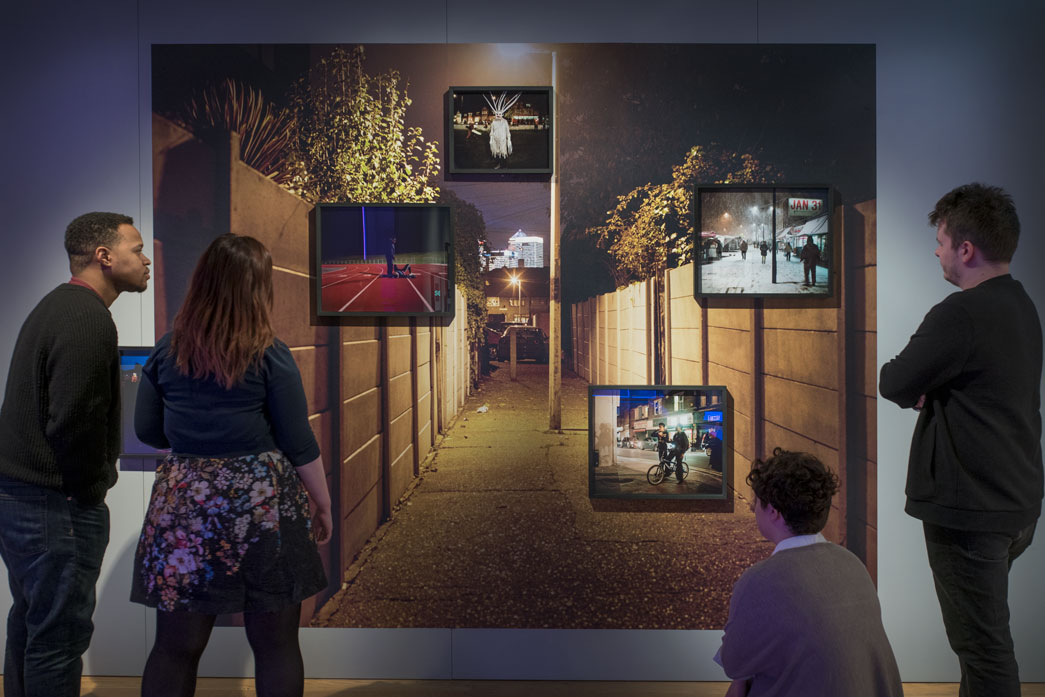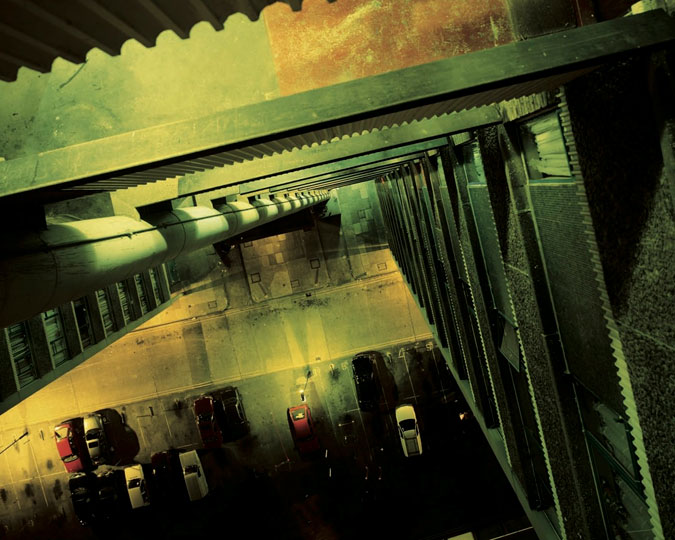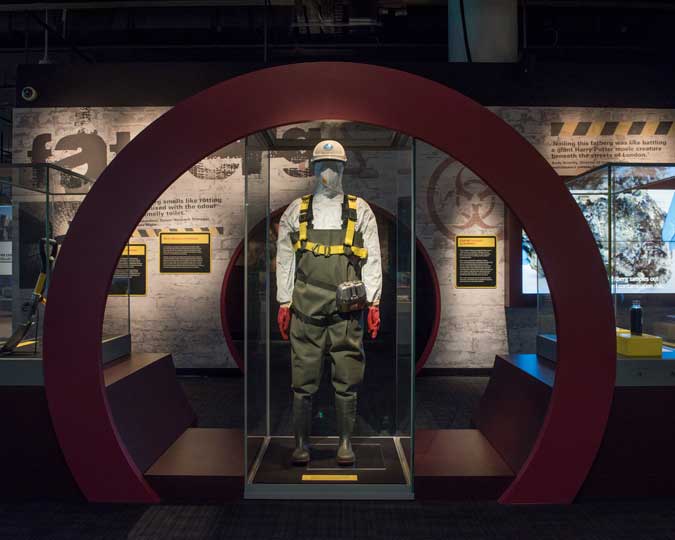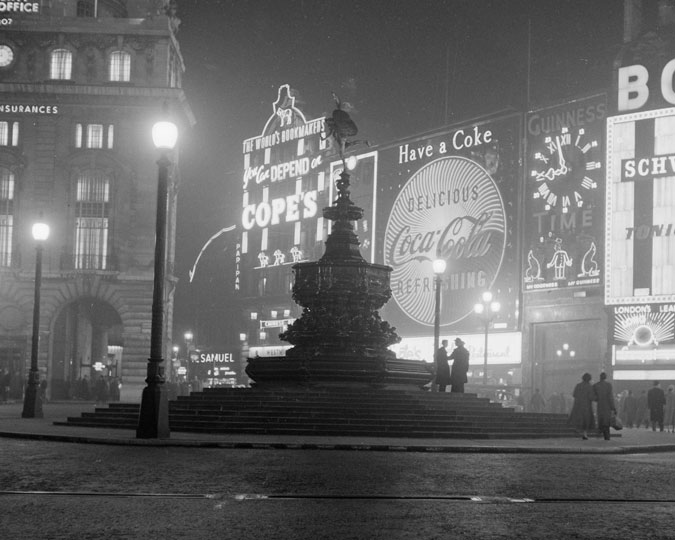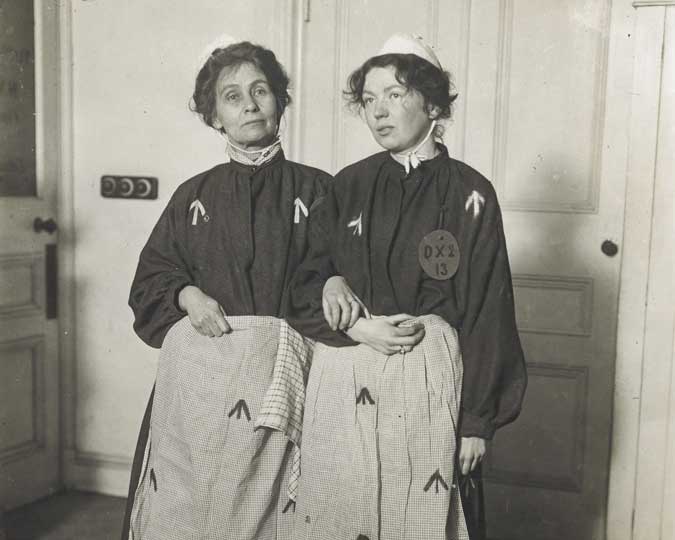Our flagship photography exhibition London Nights was on display until 11 November 2018. It featured photography from over 50 artists exploring the city at night. Curator Anna Sparham explains how we tried to capture the capital's nightlife through the camera's lens.
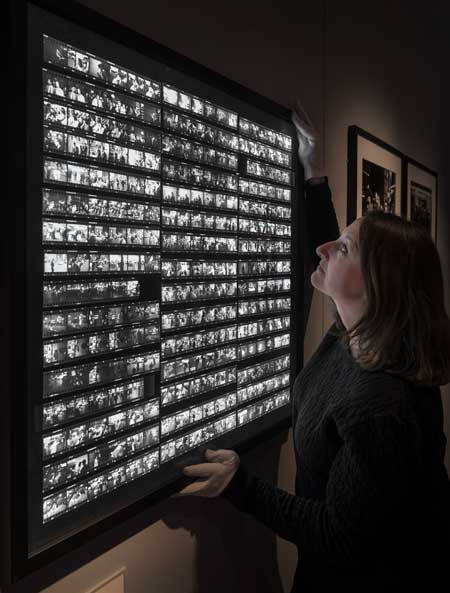
Curator Anna Sparham inside London Nights
Installing contact sheets of photographs by Bob Collins.
Over the years, our curatorial department has been fascinated by the city at night. It is after all a vast and dense theme with myriad possible directions to take an exhibition: sociologically, historically and artistically. While acknowledging these endless possibilities, London Nights explores the subject through the perspective of photographers. The exhibition engages with the specific attraction photographers have to the darkened urban environment. Photography after all depends upon light. Its presence or absence is an enticing challenge to the photographic medium.
Photographers keenly observe the aesthetic transformations that the city undertakes as it morphs from day into night. Some are attracted to the buzz of activity. Others are drawn to the quiet and still. Furthermore, many find that the imagination is unleashed after dark, just as Londoners are.
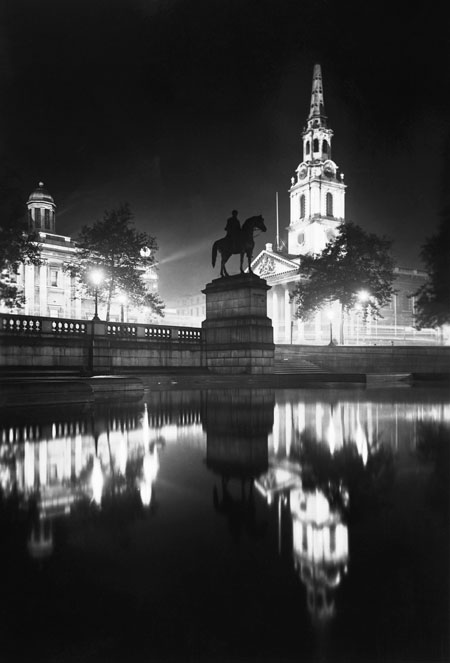
Trafalgar Square with St. Martin-in-the-Field Church floodlit at night, 1920-33
Geroge Davison Reid. In these photographs, Reid aimed to record an extended walk through the cities of Westminster and London.
I began planning the exhibition by delving deep into the collection to see what it could offer. I knew that our strengths – street photography and social documentary for example – would play a distinctive and essential role. I wanted to feature George Davison Reid’s floodlit architecture from Londin in the 1930s, and Bob Collins’ street photography around Piccadilly in 1960. I was also keen for our staff photographers to get into the darkroom again, to make select handprints from our Henry Grant collection of negatives.
From the outset I also knew that to do this subject justice and explore the night boldly and thoroughly, we would want to bring in numerous loans to complement our own collections and stretch the subjects we feature. No one collection can reflect such a diverse subject alone, and no one exhibition can in turn reflect the multitudinous happenings conjured by the night. We know how almost anything cool and quirky could be experienced at night in the capital – yet has it caught the eye and imagination of the photographer?
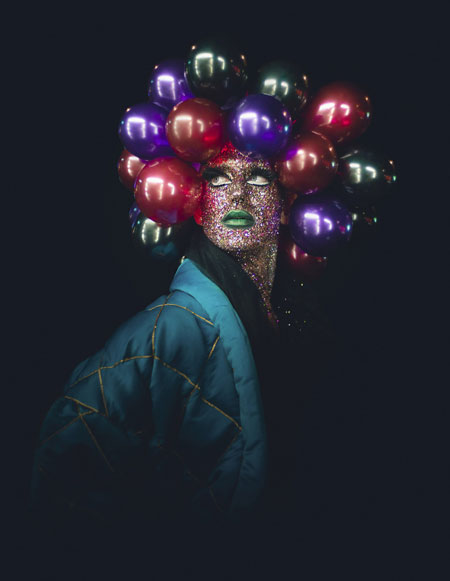
Bourgeoisie from Night Flowers, 2014
© Damien Frost. A loan on display in London Nights.
But I also wanted to engage with the wider fields of contemporary and historic photography outside of the museum. After extensive research, I requested further striking images as loans. It helped that for the last three years I've been working on another project, to expand our collections of experimental photography, also on show this spring in our free display Beyond Documentary. This helped bring certain night photographs to my attention, including works by Brian Griffin, Mitra Tabrizian and Alexis Hunter.
From this rich selection of images I began to put together London Nights. The exhibition is divided into three sections, which I've titled London Illuminated, Dark Matters and Switch On Switch Off. Each explores a different aspect of the city at night: this is not an historic or chronological overview of the night. Rather it is a visually rich pathway into this boundless subject.
I started by building an object list, central to the development of any exhibition. The designers rely upon this list to create the physical space and eventually the hang, when the objects themselves are displayed. So, the content is finalised quite early in the process.
We spend months compiling important details such as measurements of works, mounts, frames, caption heights and so on: the designers need to plan each elevation with meticulous detail. This can be challenging when handling so many works from outside of the museum, which only arrive just before installation. It's intense but thrilling work to see a simple spreadsheet transform into a physical display.
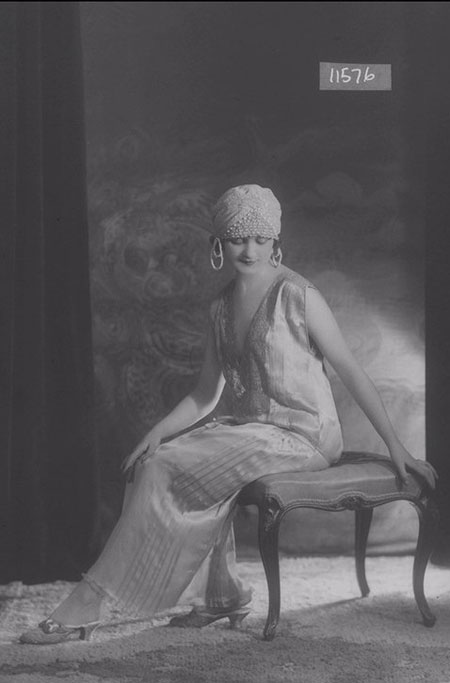
Glass plate from the Bassano Fashion Archive, 1929
A woman modelling eveningwear for the retailer Marshall & Snelgrove.
Alongside the gems from our own collection, some of which have never been displayed before, we’ve brought in loans. Some come from individual photographers and others from institutions and galleries including Tate, the Victoria & Albert museum, and the Hyman Gallery. It is truly exciting to be able to unite in one place revered works such as images by Bill Brandt or Paul Martin, the pioneer of photographing London at night, alongside vibrant contemporary images both renowned and lesser known.
One objective I had from the outset was to marry historic and contemporary works, enabling images to bounce off each other in interesting ways. For example, a stereograph from 1903 showing the Thames at night viewed from above opposite a brand new moving image piece by Chloe Dewe Mathews exploring the illuminated river.
I also included a variety of photographic formats, not giving precedence to one type over another. So, ephemeral postcards, glass plate negatives and contact sheets have their place on the wall alongside large-scale, limited-edition prints.
As we open the exhibition, the capital seems newly curious about all things nocturnal: the GLA’s appointment of London’s first Night Czar, the introduction of the night tube, and battles to save night club venues. I hope that the photography in London Nights inspires visitors to look at the night afresh, and the themes raised within the exhibition lead people to question and probe their personal relationship with London at night.
The London Nights exhibition closed on 11 November 2018.








